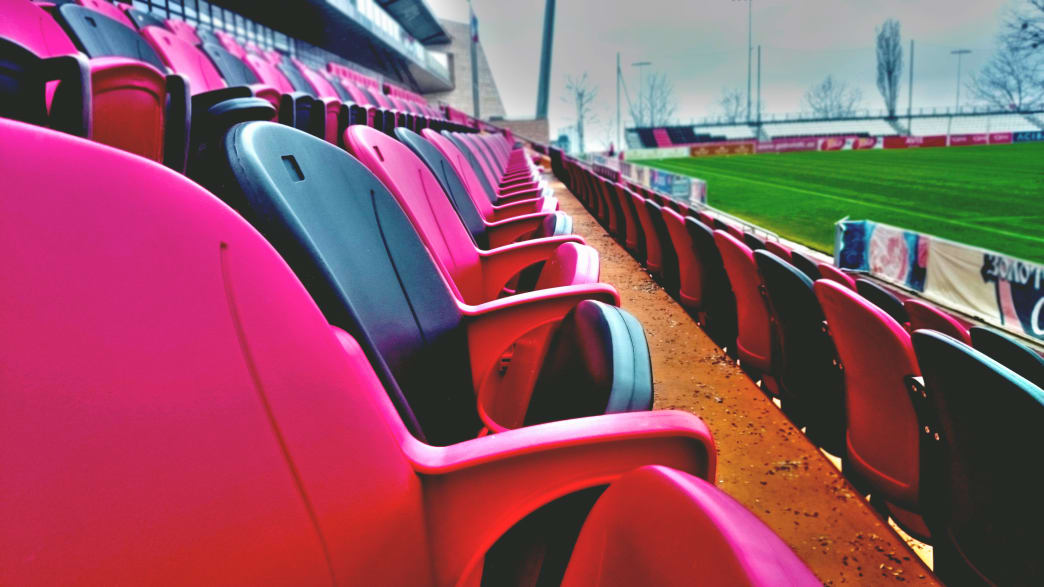
Alterations
Description
These would come in handy too...

One of the surest signs that spring is in the air is the sight of baseball diamonds, soccer pitches, and lacrosse fields filled with coaches, refs, and kids who are primed for fun after a winter of hibernation. Behind them is a legion of dedicated parents who know they’re going to spend hours on the sidelines, come wind, rain, sleet, and snow, to cheer their young athletes to victory.
The spring baseball, soccer, and lacrosse seasons are tough on spectators, especially in northern climates. They start before Daylight Savings Time kicks in, before temperatures consistently stay in the comfortable 55 degree-plus range, and before winter storm patterns give way to milder and drier conditions. But there are ways to fight off the chill and stay comfortable while you’re spectating. Maintain that team spirit with these tips on how to stay warm and dry in the bleachers at your children’s baseball and lacrosse games this spring.
One of the easiest ways to be more comfortable on the sidelines is to dress appropriately. Monitor the weather forecast a few hours before you head to the field. Download a weather app to your phone for hour by hour temperature trends and real-time radar so you can prepare for the right combination of sun, wind, and precipitation. Keep in mind that temperatures don’t have to be anywhere near freezing for hypothermia to occur. If you’re squeezing in an afternoon workout before you take the kids to practice and you’ve worked up a sweat, cooling temperatures will leave you chilled and at risk. Bring along extra layers, including a windbreaker to trap your body heat.
Not all fabrics are equal when it comes to keeping you warm. If it looks like temperatures will be dropping at game time, toss the denim and cotton in favor of a wool or synthetic base layer. Top that with a fleece or wool top and fleece pants for leg protection. Bring along a wind- and water-resistant jacket and pants if storms are in the forecast and, for extreme cold, don’t forget a fleece or wool hat. Retailers that specialize in hiking gear are your best source for clothing that will perform well when you wear them to baseball games and the like when it is cold.
Whether you’ll be seated or moving around, pack a hooded blanket from Mambe to use as an extra warm outer layer. With features like insulating thermal fleece, a heat-reflective lining, and a waterproof shell for maximum protection, you’ll be prepared for any type of weather.

Your hands and feet are vulnerable to the cold, especially when you’re stationary for hours at a time. Tuck a pair of gloves into your jacket, preferably ones that have both water-resistant and insulated linings. If you’re up north in really cold climes, add synthetic glove liners to your gear and tuck a couple of hand warmers in your pocket just in case. The same rules of layering apply when it comes to your feet. Start with sock liners and then put on wool socks as your warmth layer. Even if it’s not raining at practice, you'll likely find puddles and mud along the sidelines in spring, so waterproof shoes are a must. Hiking boots or sturdy rain boots should do the trick. Bring along toe warmers if you’re expecting extreme cold.
Warming yourself from the inside out is a surprisingly effective and often overlooked strategy to keep warm while you’re watching the game. Trade in that energy bar and water bottle for a thermos of hot coffee, cocoa, or tea on cold days. For those long baseball games that tend to go into extra innings, carry a second thermos with hearty foods like soup, pasta, or oatmeal.

There are typically two choices when it comes to sideline seating, cold metal bleachers or bringing your own chair. You’ll be the envy of the other fans if you bring along a padded bleacher cushion, even better if it’s battery-powered for hours of warmth. Another solid choice is a thickly padded camp chair that also gives you the flexibility to move up and down the sidelines with the action.
There’s a reason why your kids are sweating and peeling off layers of clothing while you’re shivering cold. Moving is the key, so make sure you keep getting on your feet, jumping up and down, and cheering the team on. If you’ve brought along the right gear, you may find yourself shedding a few layers.
Written by Ann Gibson for RootsRated in partnership with Mambe Waterproof Blankets.